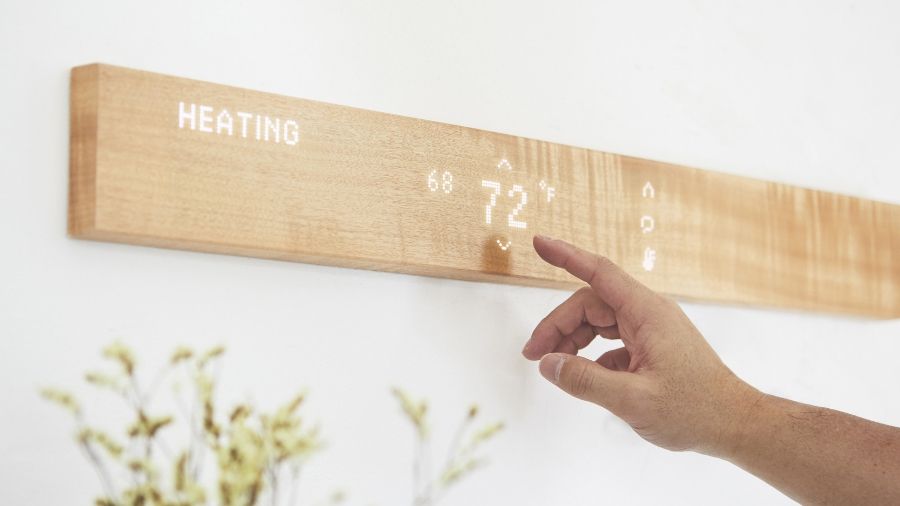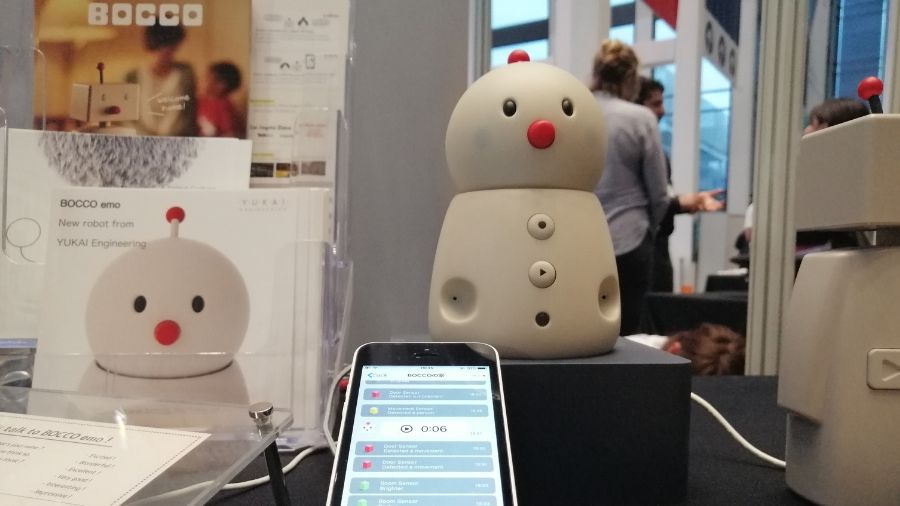'Made in Japan' tech is back and crazier than ever

There was a time when Japanese brands dominated tech and everything was ‘made in Japan’. As a country it gradually became synonymous with incredible innovation: the Walkman, games consoles, the plasma TV. Then China happened, and everything changed.
Now it’s time to take a trip back to Tokyo. With the world’s third highest GDP and more money being invested in ‘J-startups’ than at any time for a decade, Japan’s tech scene is now producing some of the most innovative ideas of all… though some of them are pretty weird.
From AI, robotics and even a private moon rover to ‘smart art’ and a surprisingly number of human-animal gadgets, here’s a sample of the startups coming out of Japan right now.


1. Langualess Inupathy dog mood sensor
A strap-on dog mood sensor that hopefully won’t annoy your dog
Is your dog happy? They may be man's best friend, but human-dog communication has not improved for centuries. Basically we’re terrible at reading dogs’ body language, so we need a gadget to do it for us.
The Inupathy wearable device uses HRV (heart rate variability) – it continually takes your dog’s pulse – and uses analysis to give you feedback on its mood as flashing colors on the back of the harness. Everything from happy and alert to concerned and stressed is covered, though there’s no color for ‘annoyed by harness’. Before you ask, it’s too big for cats.


2. Mui Pillar Memories smart art system
Measuring the height of your kids. On some digital wood
Sign up for breaking news, reviews, opinion, top tech deals, and more.
Peaceful digital living. That’s what Kyoto-based Internet of Things design startup mui Lab is trying to do with its ‘calm’ devices, the latest of which is a multimedia re-think of the family tradition of marking the growth of a child on a wall at home.
The concept model ‘hashira no kioku’ (height marking in wood) is a ‘smart art system’ that connects a wood column – actually a well-disguised touch-sensitive smart screen – and a Wacom digital pen via the cloud. After you mark your child's height using the pen, the system displays the exact measurement on the wood-screen and saves those measurements. It does the same for siblings. Well, it’s a conversation-starter…


3. ispace HAKUTO-R
The world’s first private lunar exploration program
Can Japan become a ‘moon country’? Space industry startup ispace, a private lunar robotic exploration company in Tokyo, has plans to put a lunar rover on the moon. One of the five finalists in the Google Lunar XPRIZE, ispace wants to be able to provide a vehicle for private companies so that the moon can be brought into the Earth's economic system.
The HAKUTO-R program currently involves a mission to orbit the moon in 2021 and a moon landing in 2023 for the world’s smallest and lightest planetary exploration rover, which can detect surrounding obstacles using its sophisticated camera system.


4. Pixie Dust Technologies Holographic Whisper
A speaker that gets right to the point
If you’ve never had the pleasure of listening to ultrasonic speakers, you’re in for a treat. A circular speaker like any other, the Holographic Whisper from Pixie Dust Technologies is all about directional audio that can only be heard by one person in a room who's standing in exactly the right position.
Holographic Whisper’s audible sound sources are generated in the air by high amplitude ultrasonic waves, creating a very tight beam of sound that’s focused in one small area. It could have uses in public places.


5. Yukai Qooboo cushion
Why not relax by tickling a headless robot cat?
You want a pet. You can't have a pet. So what do you do? Designed for people living in small apartments, ostensibly in Tokyo, and for those with pet allergies, Qoobo (US$165/UK£133) is a robotic cushion with a cat-like tail that makes realistic moves in response to being touched. If you caress it the tail waves gently, and if you rub Qooboo, its tail swings playfully.
Yukai also makes the equally bizarre NecoMimi, a headband with fake cat ears that moves in sync with the user’s brain waves. Essential stuff.


6. Unipos
Give your colleagues a digital pat on the back
Ever get the feeling that your happy, helpful disposition and hard work is going unnoticed? Standing for ‘unified positivity’, Unipos is a platform designed to build a culture of recognition in the workplace. Each person in a company gives feedback on everyone else essentially to express their gratitude for big or small tasks.
With 280 partners and 40,000+ active users across the world, the Unipos system is all about expanding beyond ‘key performance indicators’ in the workplace to embrace the everyday contributions by employees that previously went under the radar.


7. XPAND Code for smart cities
A barcode for football scarves? QR codes, be worried
QR codes that open URLs when you point your phone’s camera at them are clever, but ugly and geographically limited. They’re increasingly found on lampposts, train platforms, bus stops and billboards, but XPAND Code is an attempt to scale them up for the smart city and, at the same time, give them a makeover.
A new kind of virtual signage, the tech has a slim horizontal form that tries not to disrupt its surroundings. Best of all, instead of needing to be within 10cm of a QR code, you could get information from up to 200 metres away from an XPAND Code.


8. Triple W Dfree toilet timing predicting device
Is it time to go?
The world is getting old. In a rapidly ageing society like Japan a lot of innovative technology is now being created to serve the needs of the elderly, like Dfree (US$445/UK£355), a device designed to alleviate incontinence.
A small ultrasound sensor that sits on the bladder, it constantly detects its size, and before the bladder gets full it sends an alert to the wearer’s phone telling them it’s time to go to the toilet. A predictive wearable device, DFree is already used by over 2,000 people in Japan.


9. mui Lab smart home control panel
Ditch the smartphone. Get wood
Want to know the weather? Touch a tree. This novel smart home control panel is a slab of real wood that’s connected to the internet. It’s paired to your phone and your smart home, and can filter-through messages, play music, tell you the weather – anything a phone can do – but, crucially, it only displays information when you touch it.
“Smartphones are always displaying information and disturbing us, forcing us to adapt to them,” says Akikio Moriguchi at mui Lab. “This is the opposite to a smartphone.”


10. Yukai BOCCO emo responsive robot
A robot-phone for toddlers
Kids have smartphones from a really early age these days, what about toddlers and preschoolers? Give them a robot, obviously. “BOCCO Emo (US$149/£120) was created for parents and kids who are too young to use a smartphone,” says Clement Bastide, Marketing Manager, Yukai Engineering, Tokyo. “If your kid is at home and you want to check up on them you can send them a message on a smartphone and the robot will speak out loud what you write.”
The idea is that the kid can then just press the robot’s nose to send you a voice message back. It also works with smart home devices; parents can receive a message from a smart door lock if a door is left open.

Jamie is a freelance tech, travel and space journalist based in the UK. He’s been writing regularly for Techradar since it was launched in 2008 and also writes regularly for Forbes, The Telegraph, the South China Morning Post, Sky & Telescope and the Sky At Night magazine as well as other Future titles T3, Digital Camera World, All About Space and Space.com. He also edits two of his own websites, TravGear.com and WhenIsTheNextEclipse.com that reflect his obsession with travel gear and solar eclipse travel. He is the author of A Stargazing Program For Beginners (Springer, 2015),